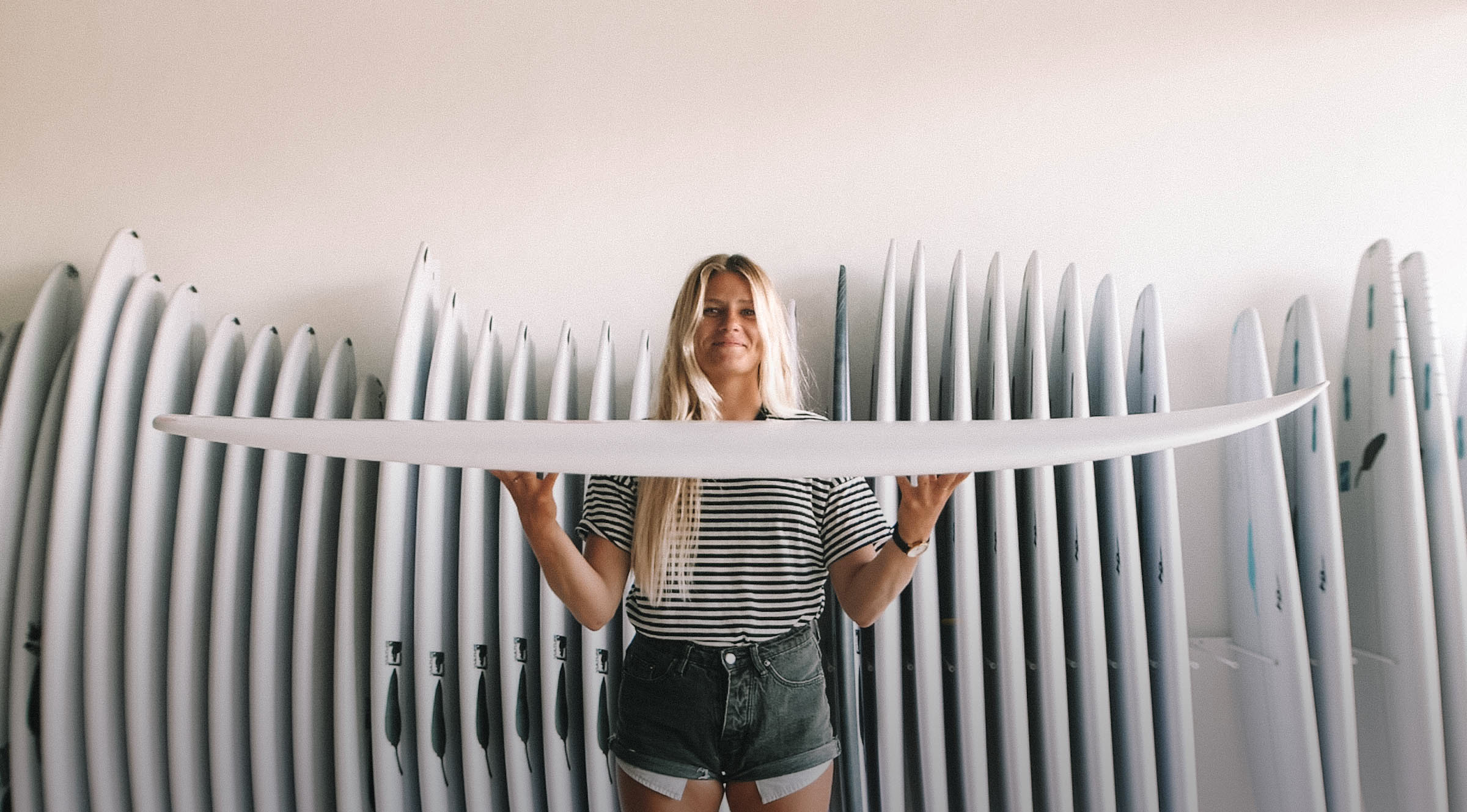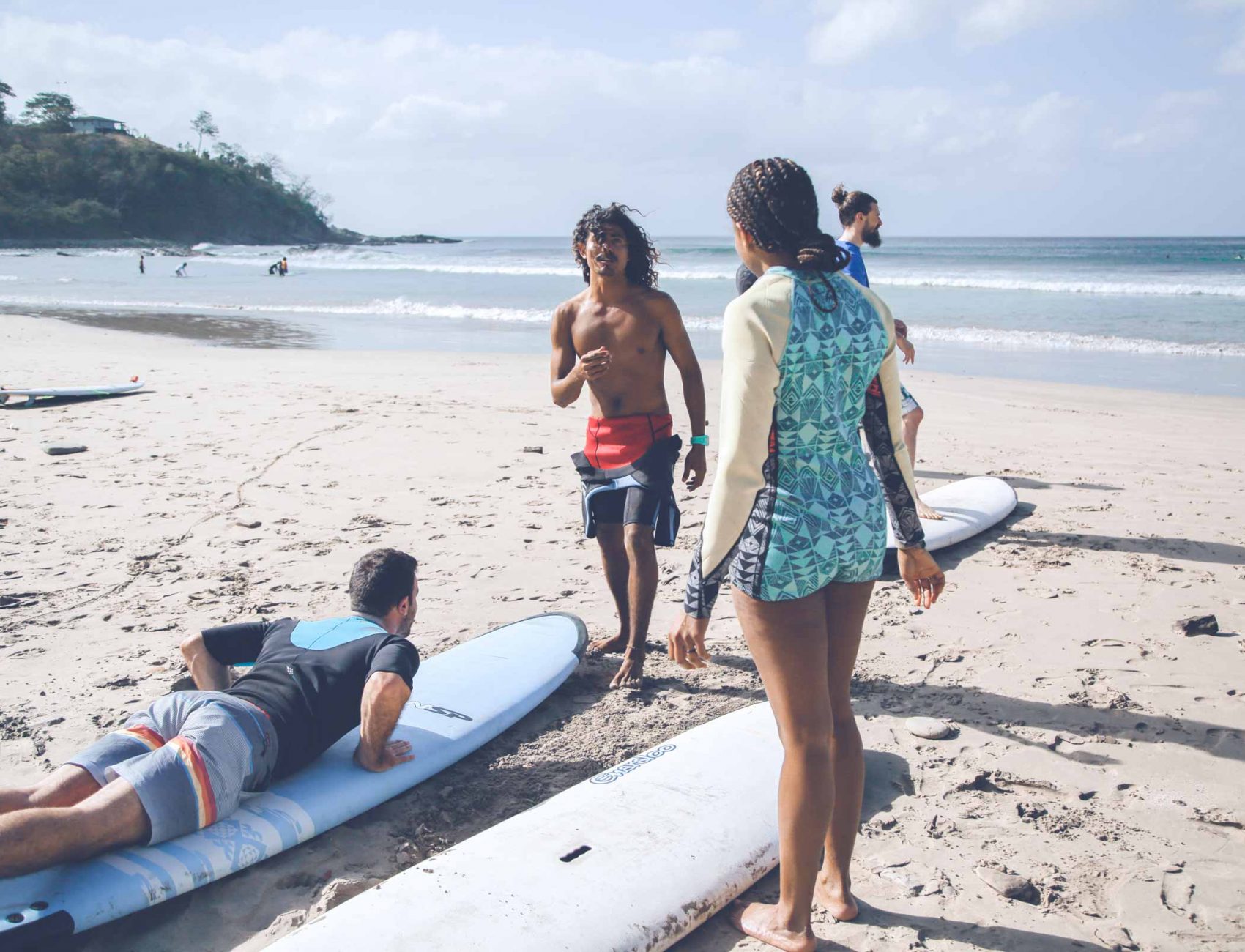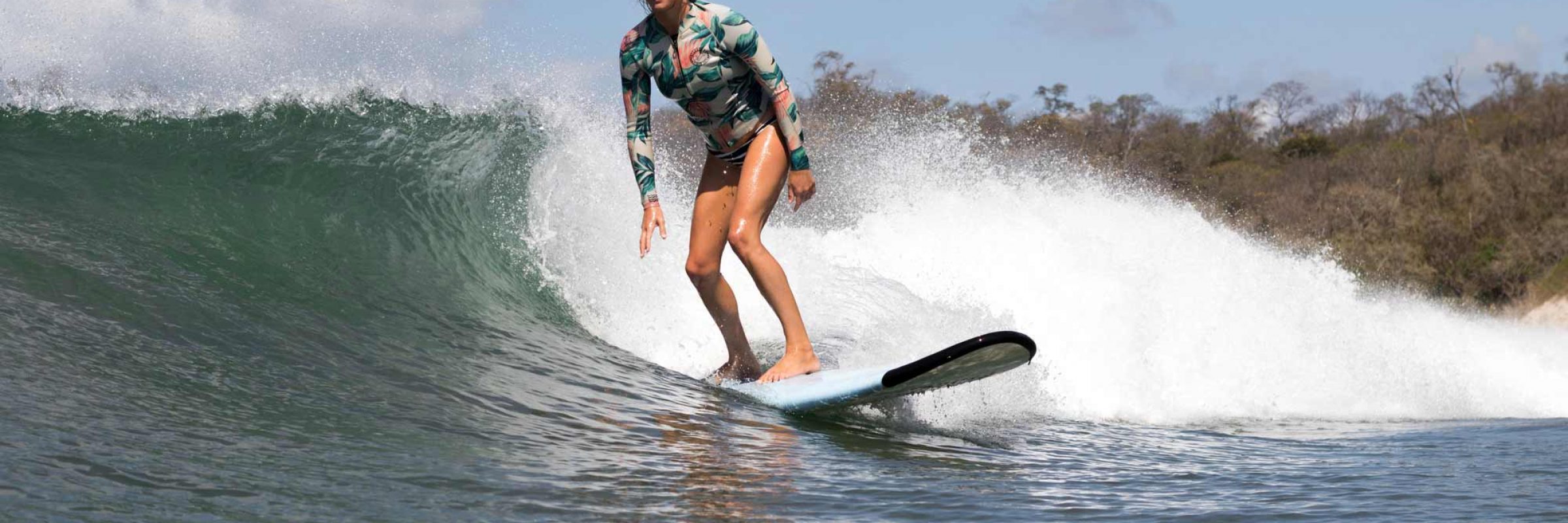

#1 - copy

Online surf coaching for beginners & intermediates
#1 - copy

Online surf coaching for beginners & intermediates
 Learn how to Stand Up on your Longboard properly
Learn how to Stand Up on your Longboard properlyThe Take Off, or Pop Up, can be done in multiple ways. The technique below is the one we’ve had most success with over the last years at Barefoot Surf Travel. Take note, this technique only works for longboards and foamboards. If you are riding a shortboard, see “How to Stand Up on a Shortboard”.
 Paddle until you really have caught the wave. You must paddle until you glide with the wave. Not sure if you’ve caught the wave’s momentum completely? Give 2 extra paddles. After you catch the wave, place both your hands flat on the surfboard next to your pectorals.
Paddle until you really have caught the wave. You must paddle until you glide with the wave. Not sure if you’ve caught the wave’s momentum completely? Give 2 extra paddles. After you catch the wave, place both your hands flat on the surfboard next to your pectorals.
 Do a “Push Up”. Your toes should be tucked on the surfboard’s tail. You should create space between your body and the surfboard: your knees, legs and waist should not touch the surfboard.
Do a “Push Up”. Your toes should be tucked on the surfboard’s tail. You should create space between your body and the surfboard: your knees, legs and waist should not touch the surfboard.


 First slide the back foot forward on the board. Your back foot should be brought at the position of your opposite knee, which is about 40-50 centimetres forward on your board. You can twist your body to help slide your back foot.
First slide the back foot forward on the board. Your back foot should be brought at the position of your opposite knee, which is about 40-50 centimetres forward on your board. You can twist your body to help slide your back foot.
 Then slide your front foot forward, it should go in between your two hands. Notice that the surfer always keeps his hands at the same position on the board when doing his pop up. His hands help stabilize the surfboard and maintain speed.
Then slide your front foot forward, it should go in between your two hands. Notice that the surfer always keeps his hands at the same position on the board when doing his pop up. His hands help stabilize the surfboard and maintain speed.
 Once you feel stable and comfortable, stand up. Make sure your feet are well positioned before you take your hands off the board. When standing up, keep your knees bent, compress your knees and lower body, and look where you are going.
Once you feel stable and comfortable, stand up. Make sure your feet are well positioned before you take your hands off the board. When standing up, keep your knees bent, compress your knees and lower body, and look where you are going.
 Make sure you have a good stance. The distance between both your feet should be shoulder width or a bit more. Your feet arches should be directly over the surfboard’s stringer. Your front foot should have an angle of 45 degrees maximum. See The Proper Surfing Stance for more details on the stance.
Make sure you have a good stance. The distance between both your feet should be shoulder width or a bit more. Your feet arches should be directly over the surfboard’s stringer. Your front foot should have an angle of 45 degrees maximum. See The Proper Surfing Stance for more details on the stance.


 Common Mistakes
Common Mistakes7-day surf coaching retreats
7-day surf coaching retreats
10-day surf coaching retreats
10-day surf coaching, intermediates only
10-day surf coaching, intermediates only
Surf better, faster
Get news about our latest Tutorials
& Surf Coaching Retreats
Leave a comment